A History of DragonsA Story by Thomas BridgesOn the culture, origins, and symbolism of one of the most prominent mythical creatures. Here are some things that are
difficult to explain: life, religion, love, puberty, dreams, tragedy, death,
and dragons. Dragons have carried a lot of weight throughout history, but their
meaning is unclear to most. Dragons of United States’ society are of
interesting note, because of their diversity. The dragons of this culture
symbolize many things from fear, power, and evil to wisdom, morals, and
cooperation. The explanation of these contrasting symbols will illuminate the
significance of dragons and the culture they reflect. But first, what are
dragons and where do they come from? Dragons are usually depicted as ancient,
all knowing, scary beings. They are snakes, lions, and raptors all lumped
together. They have scales, needle sharp teeth, four legs with pointy talons, a
long tail, bat-like wings, and their sizes vary greatly. They are powerful, yet
intelligent, something most people aspire to achieve. Dragons are also
unpredictable. If they take interest in an individual they may choose to
communicate or attack (they are also very hungry). If they attack, they could
do any number of things including: talon slashing, tail swipe, rip flesh with
pointed teeth, or breathe fire; from the ground, sky, or water; most of which
would be deadly. Anthropologist David Jones discusses the unpredictability of
dragons in An Instinct for Dragons. He
states: The
raptor call elicits an immediate life-saving response, whereas a general
predator call �" dragon in this case �" would simply freeze the hearer with a
signal that means ‘very, very dangerous’ or ‘be very afraid.’ This call would
give no specific escape information … but the resulting freezing would, in most
cases, give the advantage to the attacker. (61) These
three elements, power, knowledge, and unpredictability, make dragons very
frightening. A higher authority with these attributes is also frightening. It
cannot be neglected that, although dragons are frightening, they are also
inspiring and represent a challenge to overcome. The frightening aspect of dragons
provides some evidence to their origins. They have a very long history and have
shown up in most cultures across the world but their source is very perplexing.
David Jones did extensive research on the origin of dragons and developed a
theory. “The composite predator beast, the dragon, originates from three
different animals �" snake, raptor, cat �" that have been in a predatory/prey
relationship with primates for millions of years” (55). Jones provides evidence
that the brain simplifies information by combining items into smaller, more
detailed, blocks and at some point these three predators were grouped together
to represent a simpler, universal threat that has been recently termed dragons.
He notes studies that show recent evidence to these universal fears, such as
phobias. He discusses one such study, “Most animal phobias begin in early
childhood. Between two and six years of age, children most commonly fear
snakes, birds, and cats �" the dragon complex” (63). David Jones also goes into great
detail about the formation of each part of the dragon. The face is usually
similar to that of lions, including the beard. This image of the lion’s face is
seen by prey as it approaches to strike (74). Dragons are mostly reptilian in
nature because our ancestors have been dealing with snakes as a threat far
longer and more often than the raptor or cat (77). Their large size stems from
the most threatening, memorable adversaries being the largest. Dragons roar
just as snakes, lions, and eagles elicit a death call just before they strike.
This sudden noise causes the prey to freeze, thus granting the attacker a distinct
advantage (80). The toes of a dragon are separated and taloned as the most
dangerous feet of our “dragon-complex” belongs to the raptors. These talons are
often the last thing seen by prey when being captured (82). The treasure hoards
guarded by dragons bear likeness to “the riches of trees’ upper branches, the
location of the most succulent leaves and flowers, which are the hunting zones
of the raptors,” or the dangerous treasure, just within reach (93). But why do they
breathe fire? Perhaps, “The smoky look of the dragon’s breath might be related
to the condensation of the carnivore’s hot breath being expelled into the
relatively cool air of the early morning or evening when the big cats hunt”
(90). These images all pulled together over many years, deep in the recesses of
our minds, waiting to be spectacularly revealed. This dragon idea had been dormant in
humans for a long time, but where did it first surface in physical form?
Grafton Smith discusses the first dragons in his book The Evolution of the Dragon. He talks about the very first dragon-like
figures appearing in India. One of their mythical creatures, called the makara
(fig. 1), was a fish that resembled a dragon (105). The gryphon (half eagle
half lion) was another dragon ancestor originating from Persia (107). The Nâgas
were also similar to today’s dragon. They were snakes with spiny backs and
heads like an ox (108). Many ancient, mythical creatures, such as the gryphon
and Nâga, have been combined in various ways to form new mythical creatures. These
combinations, along with surfacing fossils of pterodactyls, t-rexes, and
stegosauruses, eventually created the image of the dragons we see today.
Fig. 1. Varuna,
the Indian God of Waters, rides a makara, one of the earliest mythical creatures
that resembled a dragon (“Varuna, the God of Waters”).
Recently, most dragons look similar, but
fall into two main categories: dragons of the west, and dragons of the east. As
aptly summarized in the novel Tea with
the Black Dragon, western dragons are “Terror on bat wings. Fire and cold
stone. Gold and jewels in heaps. Raw power!” and Chinese dragons “had a
reputation for wisdom” (MacAvoy 50). Western dragons sometimes symbolize power,
greed, and evil and usually have wings. Eastern dragons are ancient, wise,
sometimes benevolent, wingless (although they can still fly), and control the
weather. Western dragons are lizard-like and eastern dragons are more like long
snakes (fig. 2).
Fig. 2.
Top: A typical western dragon by
Lars West. Bottom: A typical green
Chinese dragon.
A grand multitude of western dragons
live in contemporary American literature. Many great examples can be found in
the books Inheritance Cycle (Eragon series), The Hobbit, Beowulf, and Harry Potter; the kids’ shows American Dragon Jake Long and Dragon Tales; the movies The Hobbit: The Desolation of Smaug, Shrek, and How to Train Your Dragon; and various other media such as video
games (Skyrim), card games (Magic the
Gathering), and board games (Dungeons and Dragons). With all this material,
there are many variances, but some similarities hold. Generally, the image
remains the same and they are usually immortal, powerful, and wise. In medieval times, all dragons were
evil, treasure hoarding beasts, that wreaked havoc on local villages. They
represented the ultimate challenge for heroic knights. J. R. R. Tolkien, author
of The Hobbit and Lord of the Rings, critiques a dragon from
a famous literary piece, “In Beowulf,
… it had these two primary features: the dragon, and the slaying of him as the
chief deed of the greatest of heroes. … A dragon is no idle fancy” (16). He
also talks of the dragon representing death and is thusly put at the end of the
protagonist’s story. “The placing of the dragon is inevitable: a man can but
die upon his death-day” (32). Dragons have since outgrown this
stereotype. Within her article, “Dragons in Twentieth-Century Fiction,” Sandra
Unerman depicts the diversity of dragons in recent literature. She discusses
the evolution of ideas surrounding dragons and evaluates their symbolism. The
characteristics of these dragons vary widely, including: evil, greedy, treasure
hoarding, powerful, frank, intelligent, telepathic, vocal, indifferent,
friendly, peaceful, glamorous, simple, and complex. Unerman focuses on the
purpose of these dragons and notes that in most cases they represent more than
a simple battle between good and evil. She states, “The changing role of
dragons in modern fiction expresses deeper changes in society, as well as in
approaches to fiction” (100). In the Inheritance
Cycle dragons are allies to mankind and help them to maintain peace. They
are also very wise. The Hobbit
depicts the dragon Smaug as cynical tyrant, massacring innocent civilizations
for fun and basking in a massive treasure hoard that once belonged to the
dwarves, before they were forcibly evicted by him. Harry Potter shows dragons as wild and uncontrollable, but the
characters never consider killing them. Humans transform into dragons and must
protect the magical world in American
Dragon Jake Long. And perhaps the opposite of The Hobbit, Dragon Tales
is a show about children that travel to a magical land to learn important life
lessons from the harmless, human-like dragons (fig. 3). Video games almost
always show dragons as evil beasts that must be defeated by the player. But, possibly
the most interesting of the bunch, How to
Train Your Dragon introduces dragons in the stereotypical way: ferocious,
terrible monsters, and gradually transitions their image into friendlier
creatures, interested in a partnership with humans when they are finally shown
respect.
Fig.
3.
Top: Smaug from The Hobbit. Bottom: Ord from Dragon Tales.
With so many dragons and so many
meanings, it can be difficult to uncover their contemporary symbolism. As
stated earlier, there are a few constants that can be analyzed. Strength,
reptilian appearance, wisdom, fire breath, and flight are the most common. Fear
is also seen, but is not universal. Often times, characters are only initially afraid
of dragons they encounter. When venturing beyond the bounds of these
definitions, however, dragons are almost too diverse to pull any conclusions
from (as seen from the numerous examples). There is another species that is just
as unique and difficult to study: humans. Today, dragons are created to reflect
people. Individuals like Smaug can represent the evil, greed, and sadism in
society and those from the Inheritance Cycle
can symbolize proper use of leadership, knowledge, and authority. According to Jones, dragons were created
out of fear, but they mean so much more now. Dragons almost always yield power,
wisdom, and unpredictability, and people often fear them (even in Dragon Tales, the children are
frightened when they first meet the dragons). Most individuals seek power and
wisdom. Being unpredictable is often said to make someone more interesting.
People who carry these traits usually hold positions of authority (just as dragons
do) and those underneath them usually have some degree of fear or concern as it
relates to their wellbeing. In the Inheritance
Cycle, dragons share thoughts telepathically and have personalities,
opinions, and knowledge, just like humans. The difference between dragons and
humans becomes even more insignificant in American
Dragon Jake Long where some humans are also dragons. They are usually in
human state, but transform into dragon state on a whim. In Dragon Land (from Dragon Tales) there are no humans and
the dragons go to schools and learn life lessons just like humans do and even
stand upright like people. Dragons represent the good and bad side in humans
but most of all, they represent power, wisdom, authority, and sometimes fear, traits
that humans consider desirable. Dragons are the personification of the model
individual. Outside literature, the dragons’
namesake is used in many different ways. “Corporate dragon” denotes a
corporation that has too much power. A female who is always negative,
aggressive, or oppressive, is sometimes called a dragon lady. “Tickling the
dragon’s tale” is a scientific phrase used to describe a risky experiment where
two halves of a radioactive core are brought together, causing a near supercritical
reaction. And “Chasing the dragon” means smoking heroin. These phrases all have
related meanings. They refer to something that is dangerous, powerful, or
scary, obviously typical characteristics of dragons. And then there are dragon tattoos. These
are some of most popular and complex tattoos available. According to Rhyan
Rhys, they have different meanings depending on whether they are found on women
or men. “A dragon tattoo on a woman acknowledges ‘woman as the true creator.’ …
Dragon body art also represents a flowing, fluid grace that conceals a reserve
of power just beneath the cool surface” and “Men who get dragon tattoos view
themselves as being revered for their wisdom but feared for their tremendous
power.” Again, dragons are seen as a symbol of power. As far as American culture is
concerned, dragons are as important as any other real creature, however their
symbolism is even greater. With this image presented in so many forms and
places, how does it impact and instruct society? The first, obvious, answer,
using the medieval dragon as an example, is that dragons teach us what
powerful, deceptive evil looks like and to face that evil with valor and
courage, even if the foe is all but impregnable. This explanation would
suffice, however not all dragons are evil anymore. In the film, How to Train Your Dragon, it can be seen that foes are not
necessarily evil, but merely misunderstood or have conflicting interests. The
story takes place at a Viking village of warriors plagued by dragon pests. The
main protagonist of the film, Hiccup, although frail in comparison to his
Viking brethren, confronts a dangerous and unusually secretive dragon called
“Night Fury.” But being different than the other members of his village, he is
unable to slay the creature and obtain his desired glory. He frees it instead
and, curiously, it spares his life. The dragon then becomes trapped in a large,
deep, bowl-shaped part of the hill as it has become injured and lost the
ability to fly. Hiccup returns to the dragon to find out why it had not killed
him (as his whole village stereotypically expects of the beasts). He learns to
cooperate with the dragon and treat it with respect and they eventually become
friends (Sanders, How to Train Your
Dragon). The film teaches viewers that violence often perpetuates conflicts
and solutions to problems exist through positive reinforcement and cooperative
efforts. An article published by the Association
for Behavior Analysis International states: Hiccup
uses positive reinforcement to gain compliance from a much larger animal that
has traditionally been a sworn enemy. … Here is a popular children's movie that
makes positive reinforcement a familiar concept and, in so doing, stresses
cooperation over opposition, thus preparing young viewers to readily accept
techniques and philosophies to which they might not otherwise be exposed.
(Chelsea Wilhite, Chris Wilhite, Williams) Clearly
these dragons teach a more complex lesson than “stand up to bad guys.” Still, other literary examples teach
us different values. The Inheritance
Cycle, four fantasy books involving dragons, emphasizes hardships;
self-sacrifice; becoming mature; and knowledge, wisdom, morals, and their
development. The books follow the activities of a simple teenage farm boy named
Eragon. Eragon’s life suddenly becomes uprooted and he must fight the evil of
the land with the help of his new dragon companion, Saphira. Tom Wolber, an associate professor of MFL,
remarks, “Books of this nature can teach young, impressionable minds much about
the difference between good and evil and the responsibilities of an individual
to society, and humanity as a whole.” He also states that the books teach
active participation and commitment, not “escapism and inaction.” These pieces
of dragon literature demonstrate the importance of personal development,
wisdom, cooperation, standing up to fears, and strength in times of trouble. As
dragons remain prominent in our literature they will probably continue to teach
us valuable lessons and serve as a social tool for education. Dragons were created out of fear; the fear of snakes, large cats, and raptors, the main predators of our ancient ancestors. That fear still carries weight. However, as culture evolved, so did dragons and their typical representation of “the evil beast that must be slayed.” In today’s American culture, their characteristics are as diverse as the individuals who conceive them. Dragons teach both simple and complex lessons to individuals and society. They have a history even older than the U.S. and continue to show prevalence in modern literature. Dragons are an important part of our culture and cultures across the world and do not show any indication of fading from our thoughts, imagination, and creations. Therefore, it is imperative that we take some time to analyze how they influence our culture today and in the future. And thus an explanation of what is known as: The Dragon! Works Cited Green
Chinese dragon. Digital image. Draconian. N.p., n.d. Web. 25 May
2014. < How
to Train Your Dragon. Dir. Chris Sanders. Perf. Jay
Baruchel, Gerard Butler, Craig Ferguson. DreamWorks, 2010. DVD. Jones,
David E. An Instinct for Dragons. New
York: Routledge, 2000. Print. MacAvoy,
Roberta A. Tea with the Black Dragon. Toronto: Bantam, 1983. Google
Play. Open Road Media, 1 Apr. 2014. Web. 25 May
2014. Rhys,
Rhyan S. "A Summary on the Meaning and Mythology of the Dragon
Tattoo." Bullseye Tattoos.
N.p., 2005. Web. 26 May 2014. < Summary-on-the-Meaning-and-Mythology-of-the-Dragon-Tattoo>. Rodecker,
Ron, and Jim Coane. "Dragon Tales." Dragon Tales. Sesame
Workshop. PBS, New York City, 6 Sept. 1999. Television. Smith,
Grafton E. The Evolution of the Dragon. Manchester: UP, 1919.
Print. The
Hobbit: The Desolation of Smaug. Dir. Peter Jackson.
Warner Bros. Pictures, 2013. DVD. Tolkien,
John R. R., and Christopher Tolkien. The Monsters and the Critics, and
Other Essays. Boston: Houghton Mifflin, 1984.
Print. Unerman,
Sandra. “Dragons in Twentieth-Century Fiction.” Folklore 113.1 (2002): 94-101. JSTOR.
Web. 11 May 2014. “Varuna, the God of Waters.”
1675-1700. Watercolor. Los Angeles County Museum of Art, Los Angeles. West,
Lars G. Red Dragon. Digital image. Wizards of the Coast.
N.p., n.d. Web. 25 May 2014.
Wilhite,
Chelsea J., Criss Wilhite, and Larry W. Williams. "Dragon Training and
Changing Culture:
A Review of DreamWorks' How to Train Your
Dragon." National Center for Biotechnology Information. Association for Behavior Analysis
International, Fall 2010. Web. 31 May 2014. Wolber,
Tom. "Exploring the World of Fantasy Novels." The Transcript.
N.p., 4 Apr. 2013. Web. 11 May
2014. © 2015 Thomas BridgesAuthor's Note
Reviews
|
StatsAuthor |
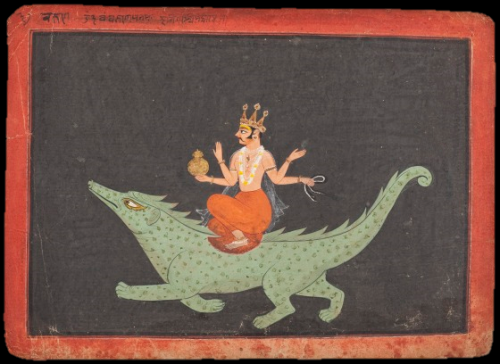
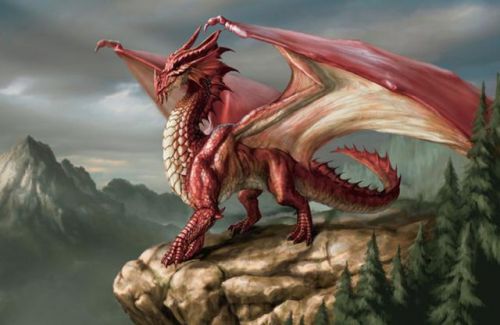
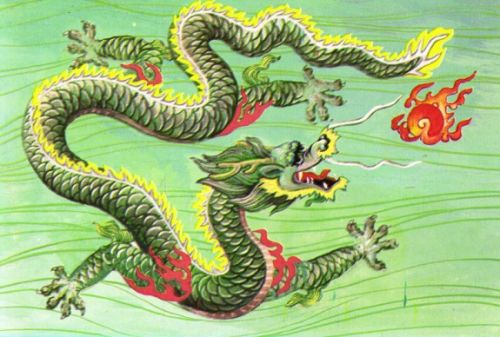
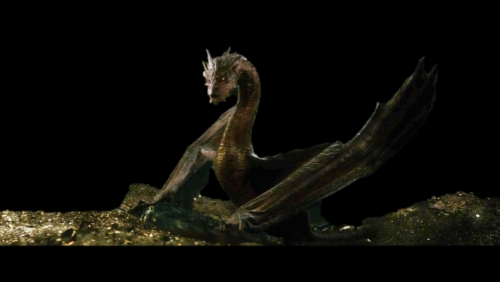
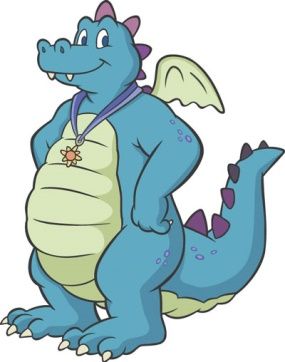

 Flag Writing
Flag Writing